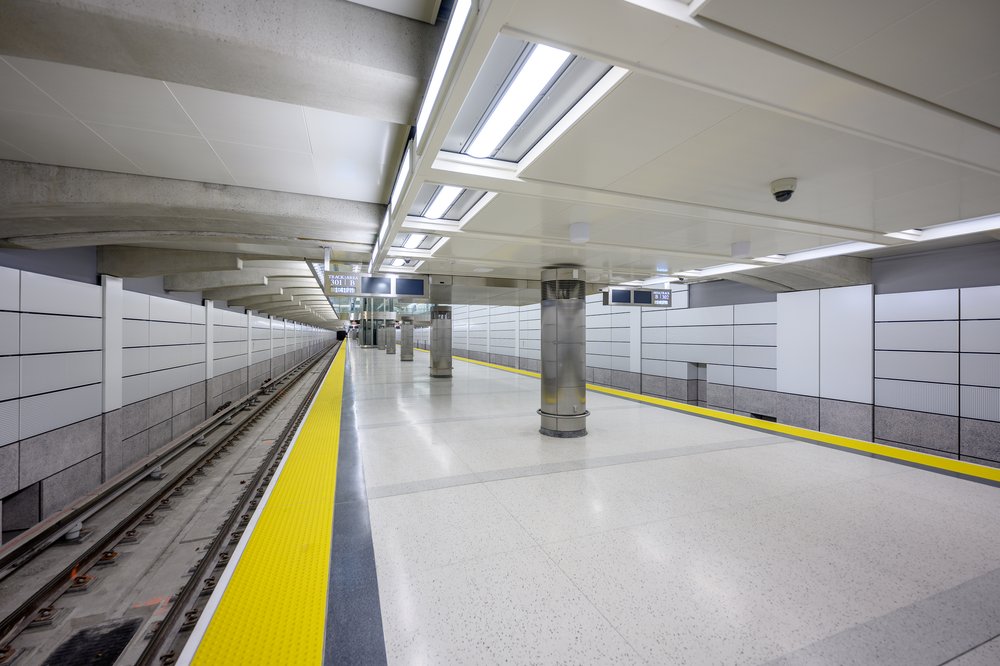Leaky tunnel, corroded tracks and rats delayed MTA’s Grand Central Madison project in 2020, documents show
April 3, 2023, 5:01 a.m.
Federal documents show major issues with the long-delayed project two years before it opened.

More than 3 miles of corroded tracks, chronic tunnel leaks and a rat infestation plagued the MTA’s long delayed East Side Access project two years ago, according to federal documents obtained by Gothamist.
The issues — flagged by federal oversight engineers on Oct. 14, 2020 — were fixed by 2021, a little more than a year before the project opened. The full extent of the problems were never disclosed to the public as transit officials rushed to finish the work to bring Long Island Rail Road trains into a new terminal on Manhattan’s East Side, now called Grand Central Madison.
The new service opened this year, more than 13 years later than the MTA’s original estimate, at a cost that exceeded $11 billion, more than $7 billion above its original budget.
The issues threatened to push the opening back even further, according to records from the oversight contractor obtained via a Freedom of Information Act request.
MTA officials in 2020 reported to the Federal Transit Administration they were on track to open the service in June 2022, according to the documents. Records show the leaks and equipment problems delayed key safety tests, and by the end of 2021 the MTA reported the project wouldn’t be finished until December 2022. MTA officials had previously told the public the project would open in late 2022.
The launch of the new service was later pushed back another month due to problems with the new train terminal’s ventilation system.
According to the documents, engineers warned 17,000 feet of tracks installed in 2017 for the project were “found to be corroded” and required replacement. “Water infiltration in numerous locations” of the East River tunnel used by the new service damaged key equipment. And rats were chewing up electronic devices used to run the new service’s signal system.
The oversight records blame the problems on “quality issues with work” by the contractors hired to build the project. In a response to the documents, MTA officials also blamed the contractors — but declined to name which companies were responsible.
“Megaprojects such as East Side Access typically experience maintenance and infiltration issues,” said MTA spokesperson Sean Butler. “These can be driven by normal wear and tear from environmental conditions, or by contractor quality of work. The MTA has been meticulous in addressing these issues, and has ensured that contractors are held responsible for resolving these matters where appropriate.”
MTA officials said the corroded track — which stretched longer than the width of Manhattan — was replaced over a five-week period in August and September 2021. The track cost $1.8 million to replace, Butler said.
Crews used grout to plug leaky areas of the tunnel in 2020 and 2021, and the equipment damaged by rats was replaced. A contractor now manages rodent traps and removes rat carcasses in the tube, according to MTA officials.
Steven Taubenkibel, a spokesperson for the Federal Transit Administration, said the agency is not aware of any current leaks in the tunnel.
“East Side Access is currently in revenue service and FTA is not aware of any existing quality control or inspection procedures concerns,” said Taubenkibel.
The leaks identified in 2020 were the latest in a troubled history of water problems in the East River train tunnel, which runs between East 63rd Street in Manhattan and 41st Avenue in Queens. Construction on the tunnel — which carries the subway’s F line on an upper level and LIRR trains on a lower level — began in 1969.
Work on the project was mostly halted following the city’s financial crisis in 1975. In 1985, consultants hired by the MTA found as much as 8 feet of water in the tunnel. A report published that year found the tunnel was structurally sound, but a lack of maintenance on its pumps allowed the water to fester in the tube for months.
Butler said restructuring at the MTA under the agency’s Chairman Janno Lieber — who ran the MTA’s construction department from 2017 to 2021 — has “increased scrutiny of contractor performance.”